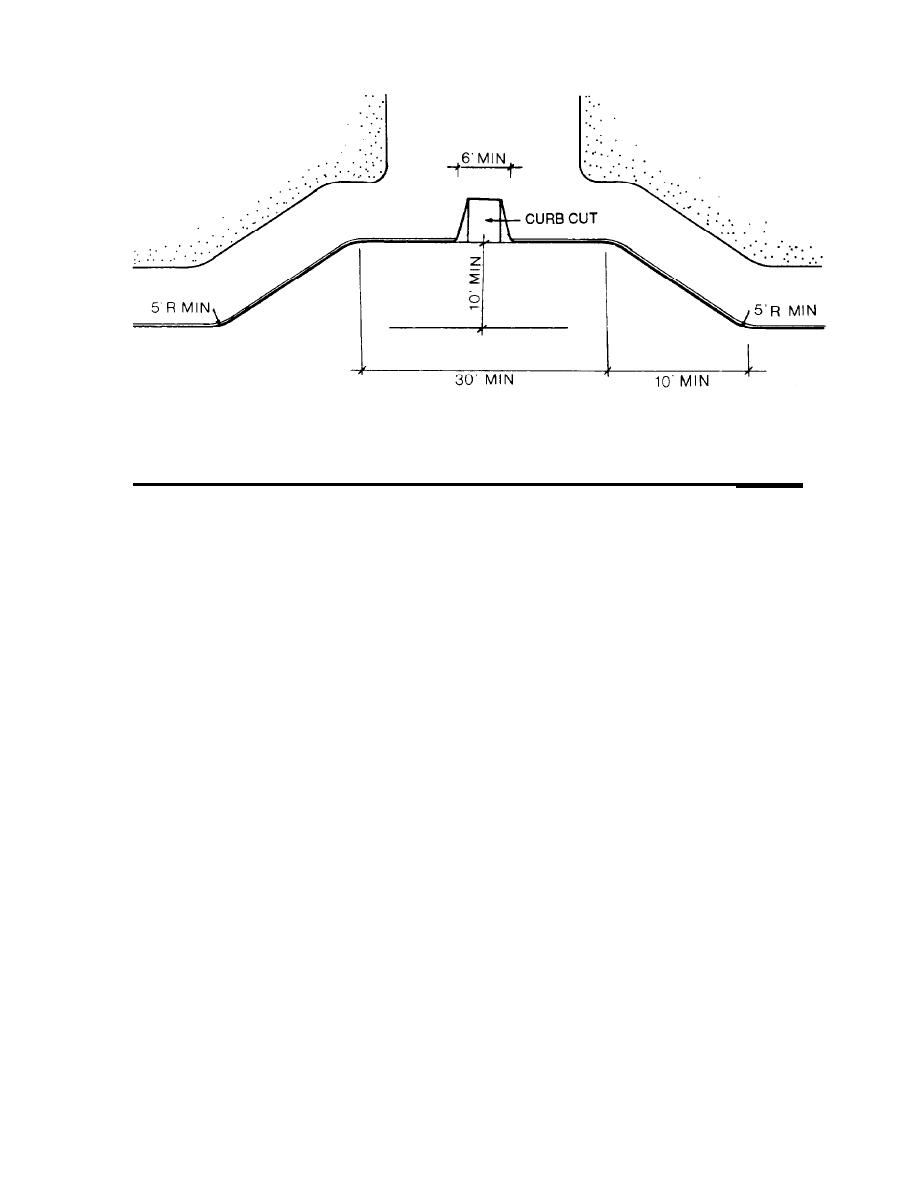
TM5-803-14
ACCESS DRlVE
Figure 6-11. Typical Dropoff Area.
a. Grading. Working closely with existing topog-
(1) Maintain traffic flow into and out of the
raphy in the placement of parking areas limits cut
drive-in windows while working with other on-site
and fill and creates a more pleasant flow experi-
vehicular traffic flow including parking.
ence. Locating parking on flatter slopes also limits
(2) Minimize interference with pedestrian traf-
cut and fill. Where slopes are steeper, more than
fic flow.
one level of parking may be used to break up the
(3) Provide adequate stacking room in the
parking expanse. Locating parking structures par-
drive-through lanes for waiting vehicles.
tially underground or surrounding them with
(4) Provide adequate stacking room on-site to
earth banks lessens their visual impact. In order
prevent spillage out into access roads.
to avoid the visual and lighting impact of automo-
(5) Use curb and planting islands to control
biles, parking should not be placed at an elevation
traffic movement.
above the finished floor elevation of surrounding
(6) Use signs and directional arrows on the
buildings.
pavement to help avoid confusion.
b. Screening. Locating parking below the grade
f. Motorcycle Parking. Figure 6-15 illustrates a
of neighboring streets and surrounding land uses
typical motorcycle parking area. Design for motor-
helps mitigate its visual impact. Berms and plant
cycle parking should:
material alone or in combination should be used to
(1) Locate parking close to building entrances.
screen parking lots from neighboring roads and
(2) Locate parking in parking lot corners.
surrounding land use. Architectural screens such
(3) Locate parking away from low areas which
as walls or fences may also be used. The design of
catch drainage.
parking screens should relate to the natural or ar-
(4) Place parking on a concrete pad which is
chitectural character of the site as a whole. Earth
resistant to kick stands in warm weather.
berms should be designed relative to the 52"
(5) Provide adequate signage and pavement
viewing height, or eye level, of a motorist. Figure
striping.
6-16 illustrates various methods of screen-ing
parking areas. It may be impractical to provide
6-7. Mitigating Vehicular Impact.
continuous screens around large parking areas.
Judicious placement of berms and plant material
Because circulation and parking consume such
can still break up the uninterrupted line of vehi-
large areas, all possible methods of mitigating
cles and significantly lessen their impact. Land-
their impact on site should be explored. A mini-
scape treatment of islands and medians can also
mum 20' wide buffer strip should separate all
be used to break up large expanses of parking.
parking areas from neighboring streets.
6-12



 Previous Page
Previous Page
